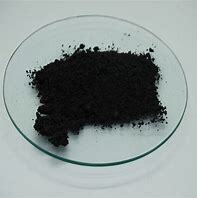1. Introduction
When you hear ‘titanium powder,’ you might picture sparklers or sunscreen—but in cutting-edge engineering, this fine metallic material is quietly revolutionizing industries. Far from cosmetic or pyrotechnic uses, titanium powder—especially in its spherical, high-purity forms—is the backbone of modern additive manufacturing (AM), also known as 3D printing. From jet engines to hip replacements, titanium powder enables parts that are lighter, stronger, and more complex than ever before. In this article, we’ll dive into how titanium powder is used in real-world, high-stakes applications, what drives its cost, and why it’s often chosen over alternatives like molybdenum powder or tungsten powder.

2. Why Titanium Powder for 3D Printing?
Additive manufacturing demands metal powders with precise characteristics: high sphericity, consistent particle size distribution, and excellent flowability. Titanium powder meets these needs exceptionally well, especially when produced via gas atomization—a method that yields spherical titanium powder ideal for laser powder bed fusion (LPBF) and electron beam melting (EBM). Among the most widely used variants is Ti6Al4V powder (also called Ti64 powder), a titanium alloy powder prized for its strength-to-density ratio, corrosion resistance, and biocompatibility. Pure titanium powder is also used, particularly in medical applications where alloying elements must be minimized.

3. Key Applications in Aerospace and Medicine
In aerospace, titanium powder for 3D printing allows engineers to produce lightweight, topology-optimized components like turbine blades, brackets, and fuel nozzles that would be impossible—or prohibitively expensive—to machine traditionally. Companies like Boeing and Airbus now routinely use titanium 3D printing powder to cut weight and improve fuel efficiency. Meanwhile, in the medical field, Ti6Al4V powder is the gold standard for custom orthopedic and dental implants. Its mechanical properties closely mimic human bone, and its surface can be engineered to encourage osseointegration. Spherical titanium powder ensures dense, defect-free prints critical for load-bearing implants.
4. Understanding Titanium Powder Variants and Pricing
Not all titanium powders are created equal. The titanium powder price per kg varies dramatically based on purity, particle morphology, and alloy composition. For instance, gas atomized titanium powder costs more than HDH (hydride-dehydride) titanium powder due to its superior sphericity and flow—key for reliable 3D printing. Ti6Al4V powder price typically ranges from $300 to $600 per kg, while pure titanium powder may be slightly cheaper. In contrast, specialty powders like titanium nitride powder, titanium carbide powder, or titanium diboride powder (TiB2 powder) serve niche roles in coatings or composites but aren’t standard for AM. When you buy titanium powder, always verify whether it’s optimized for additive manufacturing—look for terms like ‘spherical titanium powder’ or ‘titanium powder additive manufacturing grade.’
5. How Titanium Compares to Molybdenum and Tungsten Powders
While titanium dominates in lightweight, high-strength applications, other refractory metal powders like molybdenum powder and tungsten powder serve different niches. Molybdenum metal powder—often used as moly powder or in forms like molybdenum disulfide powder (MoS2 powder)—excels in high-temperature environments, such as furnace components or aerospace heat shields. Similarly, tungsten powder, with its extreme density and melting point, is favored for radiation shielding and kinetic penetrators. However, neither matches titanium’s biocompatibility or strength-to-weight ratio. Global tungsten & powders corporation and other suppliers offer tungsten carbide powder for wear-resistant coatings, but these materials are rarely used in medical 3D printing. In short, titanium powder for sale caters to performance-critical, weight-sensitive applications, while molybdenum and tungsten powders address thermal and density-driven needs.
6. Sourcing and Practical Considerations
Choosing a reliable titanium powder supplier is crucial. Reputable vendors provide certificates of analysis detailing oxygen content, particle size (typically 15–45 µm for LPBF), and Hall flow rate. Beware of misleading terms like ‘titanium dust’ or ‘burnt titanium powder coat’—these aren’t suitable for AM. Also, note that titanium powder is not water-reactive under normal conditions but can be pyrophoric in fine, unpassivated forms, requiring careful handling. If you’re looking to buy titanium powder for 3D printing, expect to pay a premium for certified, spherical, low-oxygen batches. The titanium powder cost reflects not just raw material value but also the energy-intensive production process and stringent quality control.
7. Conclusion
Titanium powder isn’t just another industrial material—it’s an enabler of next-generation innovation. Whether you’re designing a satellite component or a patient-specific spinal cage, titanium powder for 3D printing delivers unmatched performance. While the titanium powder price per kg may seem steep, its value lies in enabling geometries and functionalities impossible with conventional manufacturing. As additive manufacturing scales, expect broader adoption—and perhaps more competitive pricing—from international titanium powder suppliers. For now, understanding the differences between Ti64 powder, pure titanium powder, and alternatives like molybdenum or tungsten powders ensures you select the right material for your high-stakes application.
Our Website founded on October 17, 2012, is a high-tech enterprise committed to the research and development, production, processing, sales and technical services of ceramic relative materials such as Titanium. Our products includes but not limited to Boron Carbide Ceramic Products, Boron Nitride Ceramic Products, Silicon Carbide Ceramic Products, Silicon Nitride Ceramic Products, Zirconium Dioxide Ceramic Products, etc. If you are interested, please feel free to contact us.
